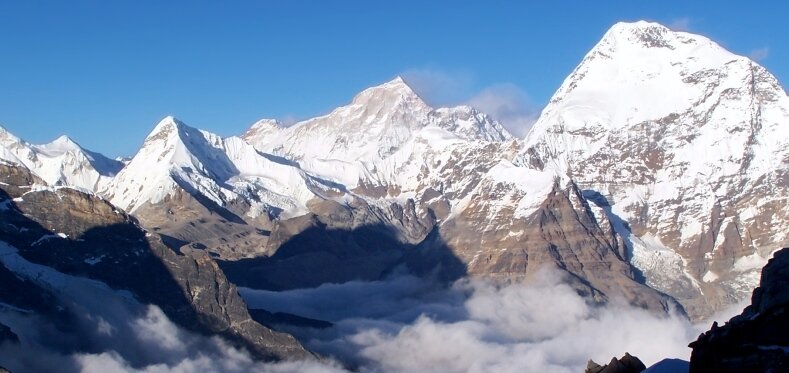Interview: How It Feels To Climb Everest

The thought of climbing Mount Everest first crossed her mind in late 2003 when she was 31. Fiona Adler wound up climbing Everest just 18 months later with the help of sherpa Mingma and her partner Paul. The climb took “2.5 months” including acclimatization and good weather window waits.
Find out how the hardcore Australian hiker, an admirer of old-school climbers like Edmund Hillary and George Mallory, succeeded.
Why did you decide to climb Everest?
Mountaineering started as an extension of hiking for my husband and I. When we met, we started hiking together in the Victorian Alps, and then started tackling some big mountains overseas.
Initially, we just did trekking peaks – our first was Mt Aconcagua in Argentina – but once we got a taste for it, we set our sights on harder goals.
After 10 years or so of this, we realized that we had almost enough experience to put Everest on the agenda…
How did you get in shape?
We took our training pretty seriously but unfortunately in Melbourne, there are very few decent hills nearby. Consequently, most of our training was done on a bike. We’d ride eight times a week, and also do a long run, a running interval session, a weight session, and intersperse all of this with week-long hikes in the Victorian Alps.
A fantastic consequence has been that we both now cycle regularly and have many new friends we ride with.
What did you eat?
I’d generally have porridge for breakfast, bars while climbing, and dinner would usually be something like noodles, tuna, or pasta. The worst thing I had was spam and also double-boiled eggs: hard-boiled at basecamp to make transportation possible, and then re-cooked up higher.

What surprised you most about the climb?
I’d read a lot of different accounts of Everest climbs previously, so nothing was really all that surprising. One thought I’ve had was that individually, nothing was really tremendously hard.
But, cumulatively, it was incredibly difficult.
How did you cope with thin air and freezing cold?
Freezing cold really just means that you need the right gear, and you need to pay extreme attention to looking after yourself.
Having had frostbite previously, I had a mantra or checklist that I’d try to run through while climbing – toes, fingers, ears, nose – can I feel them? Are they OK? The worst thing about frostbite is that you don’t feel it happening.
The thin air is the most difficult part of climbing. If Everest was at sea level, it would be a walk in the park. Even just swinging a pack onto your back and taking a couple of steps could leave me feeling – and breathing – like I’d just run a 200-meter sprint.
Cardio-fitness helps but is not the full story. Being able to slow down to a pace that I could maintain seemed to work for me – which meant I was going incredibly slowly, but hey, the turtle got there…
How did you feel when you reached the top?
Amazed – that I had actually gotten there.
Early on during the summit climb, I had thought I was going so slowly that there was no way possible I’d make it to the top before my turn-around time. However, I just resigned myself to seeing how far I could get, which is lucky.
I felt very proud and humbled at the same time – the world is a very big place from up there, and it’s clear that it’s a very long way down…

How did the descent compare with the ascent?
The descent was much easier and faster, but I was also exhausted. It was a battle of will to keep focused and keep moving in a methodical and careful way.
What was your best moment?
Making it safely down and especially through the harrowing icefall and arriving back at base camp was when I truly knew that I could celebrate having climbed Mount Everest.
I was utterly exhausted and really couldn’t believe that I’d climbed to the top.
What’s your advice to anyone tempted to tackle Everest?
Tick off several other high mountains first – start with trekking peaks and move to more technical climbs. Unfortunately there are no short-cuts to experience.
What’s your top tip on successful climbing?
Make your decisions before you’re tired and affected by altitude. Then stick to them.





Comments